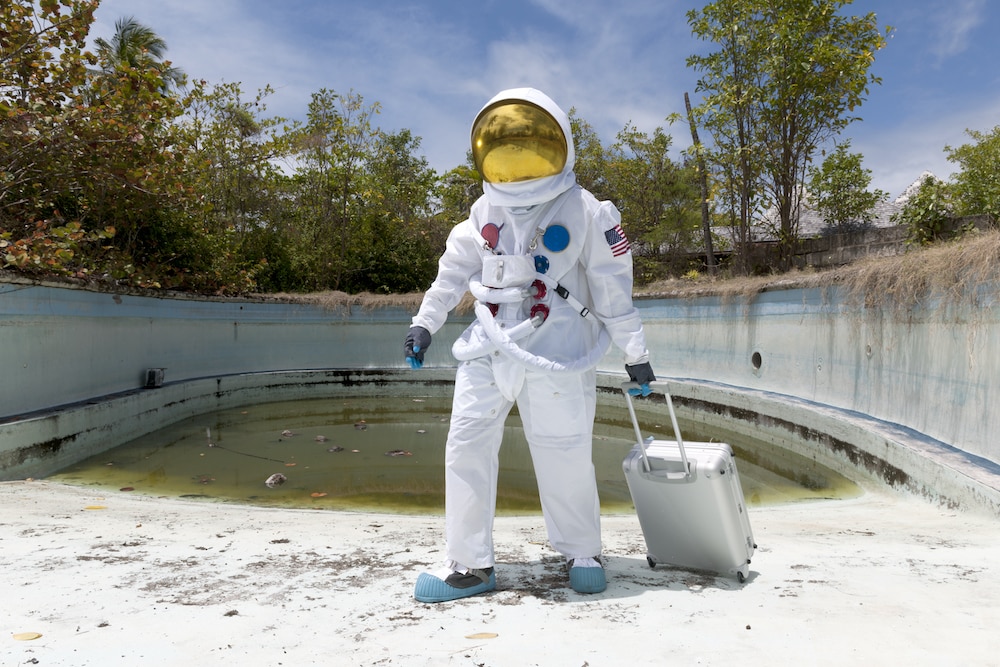Create a free profile to get unlimited access to exclusive videos, sweepstakes, and more!
Alien pathogens or invasive species could hitch a ride on a spacecraft and invade our planet
If we don't watch out, alien microbes could invade Earth, or Earth microbes might crawl on an alien world

Alien invasions don’t necessarily mean swarms of greenish-gray creatures in flying saucers taking over the planet.
If there is microbial life out there, and it exists anywhere humans may venture in the future, we could be in for a pandemic we never saw coming. The past two years have obviously told us we are barely ready to deal with new Earth pathogens. So what would happen if pathogenic or otherwise invasive organisms from another planet hitched a ride on a returning spacecraft, an astronaut’s space suit, or — if space tourism becomes a thing — someone’s suitcase?
Invasive species that spawned right here have done enough damage where they don’t belong. Pathogens that keep mutating have done worse. Now that there is so much discussion around humans eventually going (boldly or otherwise) where none of our species have gone before, invasion ecologist Anthony Ricciardi of McGill University in Montreal, Canada, is nervous. He coauthored a study recently published in BioScience.
“Unprecedented risks are posed by a new era of space exploration aimed at targeting areas most likely to contain life,” Ricciardi told SYFY WIRE. “The concern is not only about alien pathogens, but about organisms that could colonize and proliferate Earth environments.”
The opposite also applies. Back contamination would involve unwanted organisms landing and breeding on Earth, while forward contamination means Earth organisms could populate another planet. Forward contamination is a current concern for NASA and other space agencies. This is why all spacecraft and payloads have to be sterile before taking off. Microorganisms like e.coli and black mold have survived the punishing conditions of outer space while crawling on the ISS, so they might be able to make it through a mission to the Moon or even Mars.
Back contamination will become more of a problem to face when the samples that Perseverance is collecting on Mars right now are returned to Earth. It seems unlikely that anything is still alive on the Red Planet, but there could be hypothetical life-forms that somehow eluded the killer radiation everything else is exposed to and burrowed deep beneath the surface. Upcoming missions to Europa, Titan, and possibly Enceladus are riskier because those moons are thought to have greater habitability potential. For now, Ricciardi has thoughts on how to prevent spreading Earth microbes.
“Early detection and rapid response are keys to biosecurity,” he said. “Early detection could be aided by DNA sequencing technologies and thorough databases on organisms found in the ‘clean rooms’ in which spacecraft are assembled.”
The problem is that we might not recognize life from elsewhere as something alive. Life as we don’t know it, which evolved somewhere far from here, could have adaptations and genetic structures so different from anything on Earth that nobody sees it for what it is. By the time the alien thing starts wreaking havoc on an ecosystem, it could be too late. Invasive species can cause extinction of endemic species even if the invaders aren’t pathogenic (like cane toads). Prevention is the most effective weapon we have against forward or back contamination.
Something we do know is that ecosystems considered insular, such as Hawaii, Australia, Madagascar, and Antarctica, evolved in isolation and are particularly vulnerable to invasive species. Cane toads devastated Australia when they were introduced. Ricciardi and his colleagues believe that planets and moons where life may be hiding should be treated like insular ecosystems, so both forward and back contamination are prevented.
“Early detection and rapid response measures developed to manage the risks of invasive species on Earth could be applied to planetary biosecurity,” he said.
While there is the possibility of microbes from Earth having gone along for the flight to Mars, chances they would survive in a place constantly bombarded with solar storms and cosmic rays are not high. That still doesn’t mean we should not be on the lookout. If signs of life are unearthed on Mars, astrobiologists must be able to be sure that they are actually Martian and not Earth organisms that either survived and multiplied or survived and mutated as they multiplied. Whether this can happen remains speculative because we have no precedent.
“It is impossible to predict how disruptive microbial contamination could be without knowing the traits of both the invading species and the receiving environment,” said Ricciardi. “We have no information to anticipate whether they could survive on Earth and what effect, if any, they could have.”


























